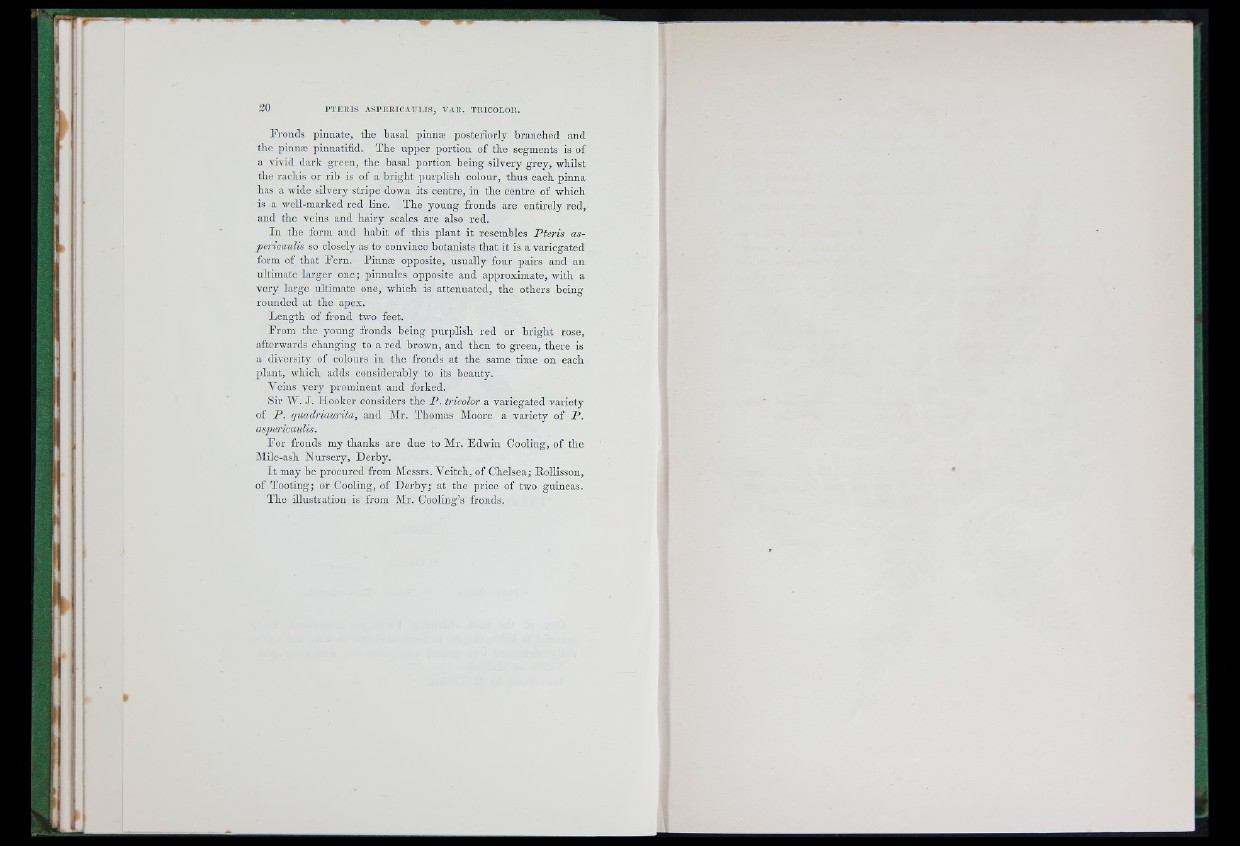
Fronds jiinnate, the basal pinnæ posteriorly branched and
the pininc pinnatifid. The upper portion of the segments is of
a vivid dark green, the basal portion being silvery grey, whilst
the rachis or rib is of a b rig h t purplish colour, thus each pinna
has a wide silvery stripe down its centre, in the centre of which
is a well-marked red line. The young fronds are entirely red,
and the veins and hairy scales are also red.
In the form and habit of this plant it resembles P te ris aspericaulis
so closely as to convince botanists th a t it is a variegated
form of th a t Fern . Pinnæ opposite, usually four pairs and an
ultimate larger one; pinnules opposite and approximate, with a
v ery large ultimate one, which is attenuated, tho others being-
rounded at the apex.
L ength of frond two feet.
From the young fronds being purplish red or b rig h t rose,
afterwards changing to a red brown, and then to green, there is
a diversity of colours in the fronds at the same time on each
p lant, which adds considerably to its beauty.
Veins very prominent and forked.
Sir W. J . Hooker considers the P . tricolor a variegated variety
of P . quadriaurita, and Mr. Thomas Moore a variety of P .
aspericaulis.
F o r fronds my thanks are due to Mr. Edwin Cooling, of the
Mile-ash N ursery, Derby.
I t may he procured from Messrs. Veitch, of Chelsea; Eolllsson,
of Tooting; or Cooling, of Derby; at the price of two guineas.
Tho illustration is from Mr. Cooling’s fronds.